
You have an unknown sample sitting on the bench, waiting for pyrolysis GC-MS analysis. You’re not sure what it is yet, but one thing’s certain: data interpretation is just around the corner.
Even with the best instruments, reliable data depends on your expertise. Knowing the right analytical techniques can help you confidently characterize unknown samples.
Each peak on a chromatogram represents an analyte. As the analyte passes through the mass spectrometer (MS), it fragments in a unique way. The resulting fragmentation pattern is represented by its mass spectrum, which the system compares against can be searched in a database, or library, full of known spectra. Software then provides a ranked list of potential compound matches based on similarity.
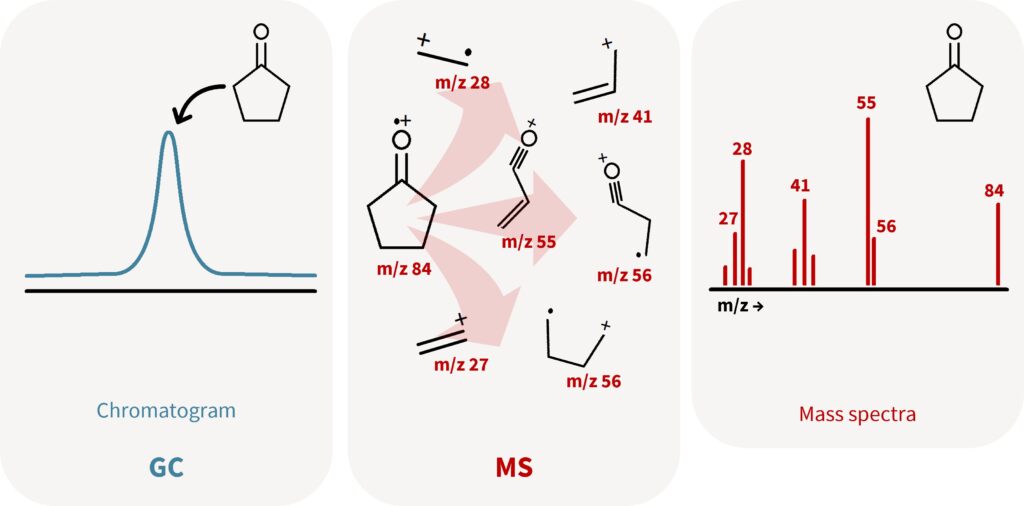
Pyrolysis breaks a sample into smaller molecules (called pyrolyzates) before they enter the GC. Complex samples like polymer blends or additives generate intricate data sets. Matching each pyrolyzate to its source compound can be tricky.
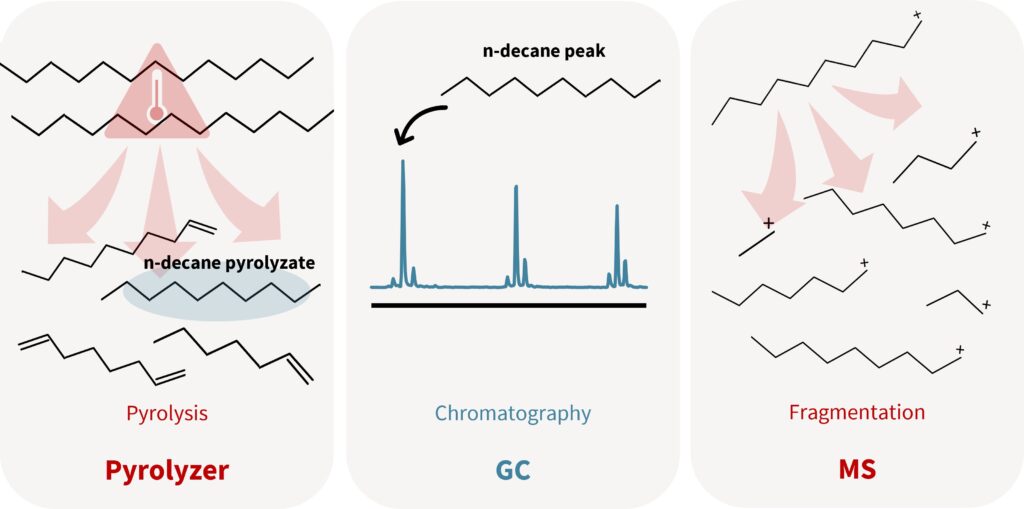
That’s where tools like F-Search and its polymer/additive libraries offer a strategic advantage.
In this article, we’ll outline each of the 5 analytical techniques for characterizing unknown samples, plus offer tips on how they can be adapted to pyrolysis data.
Relying only on the top match in a spectral database can lead to misidentification, especially with noisy or contaminated data. If something feels off, explore other matches or try a different database for comparison.
💡 Tip: F-Search lets you run NIST searches directly from the interface.
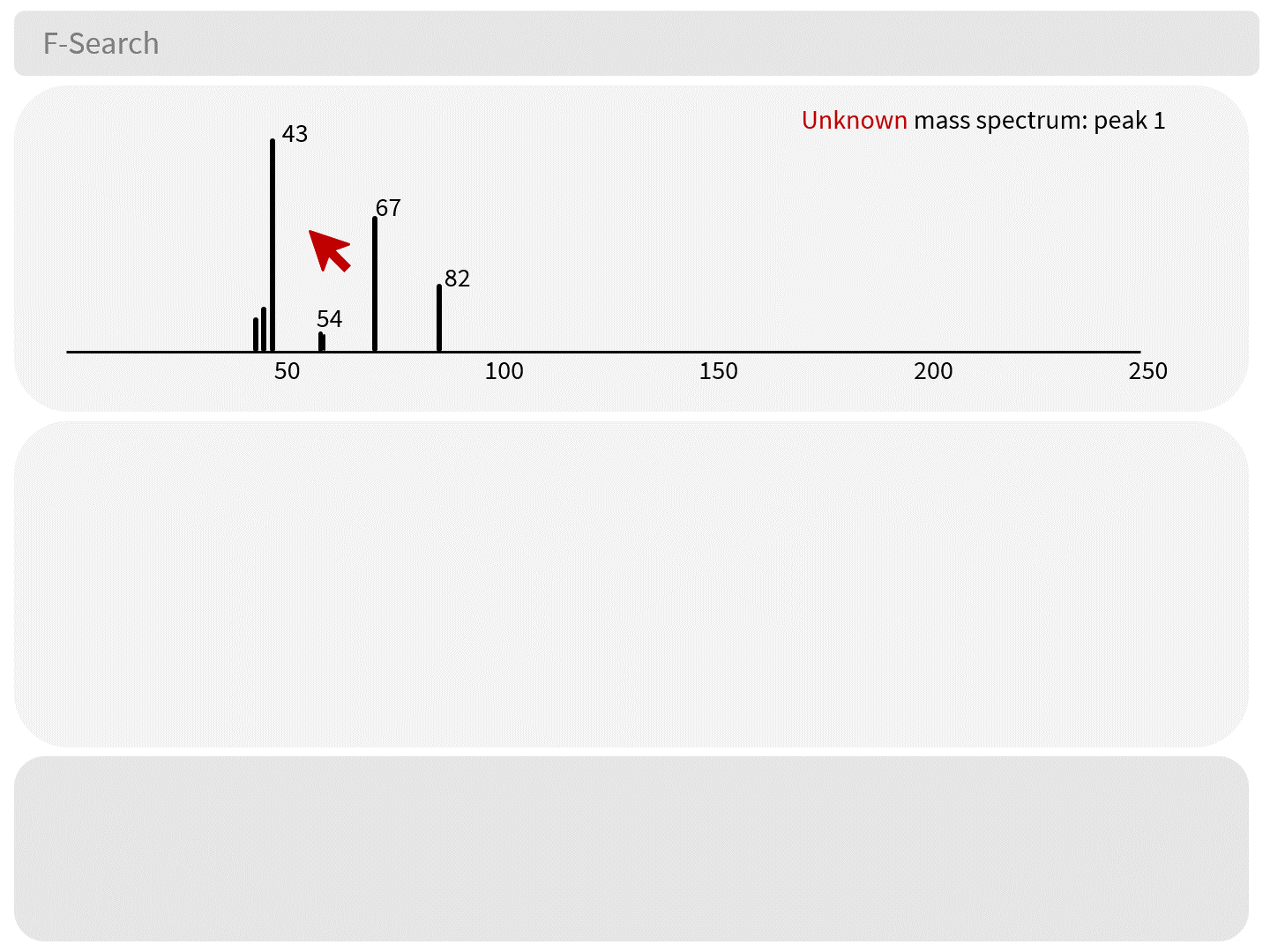
Running a known reference alongside your unknown samples provides powerful context. For instance, comparing leather to a neat collagen sample highlights additives clearly.
You can build your own reference library using clean resins, additives, or production materials.
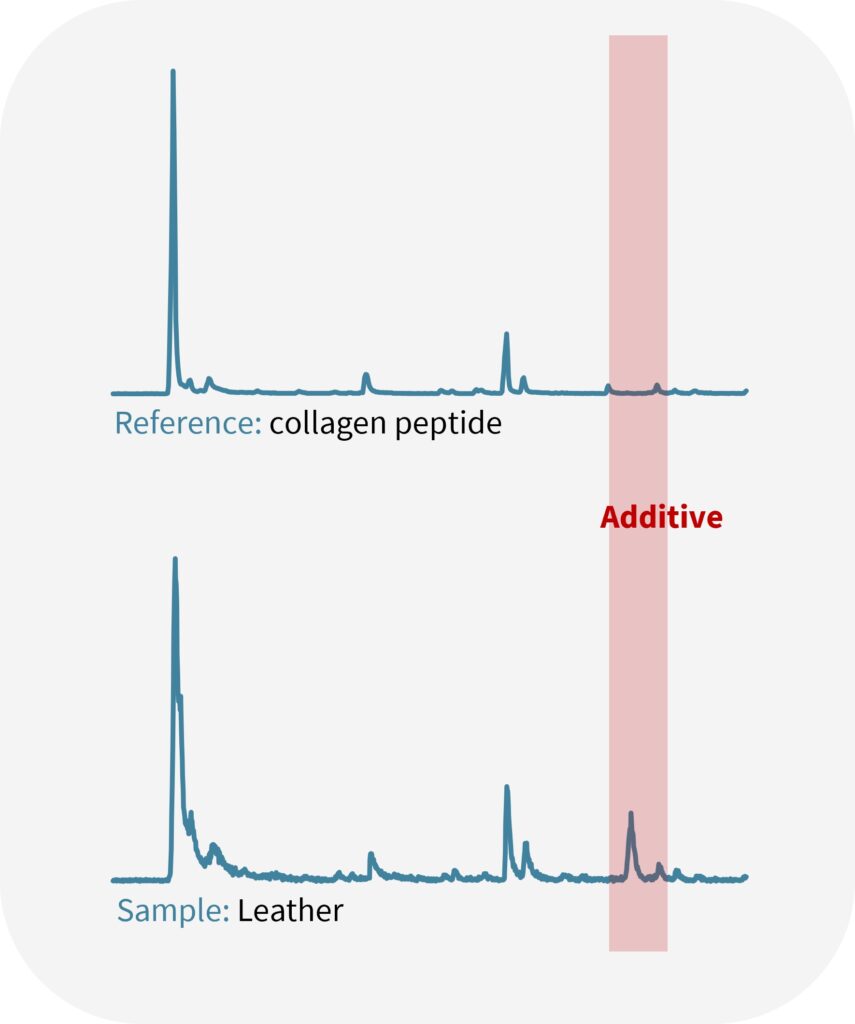
💡 Tip: Save your reference runs in a custom user library to use later as internal standards.
Background subtraction helps remove noise, isolate co-eluting compounds, and improve match accuracy.
Example use cases:
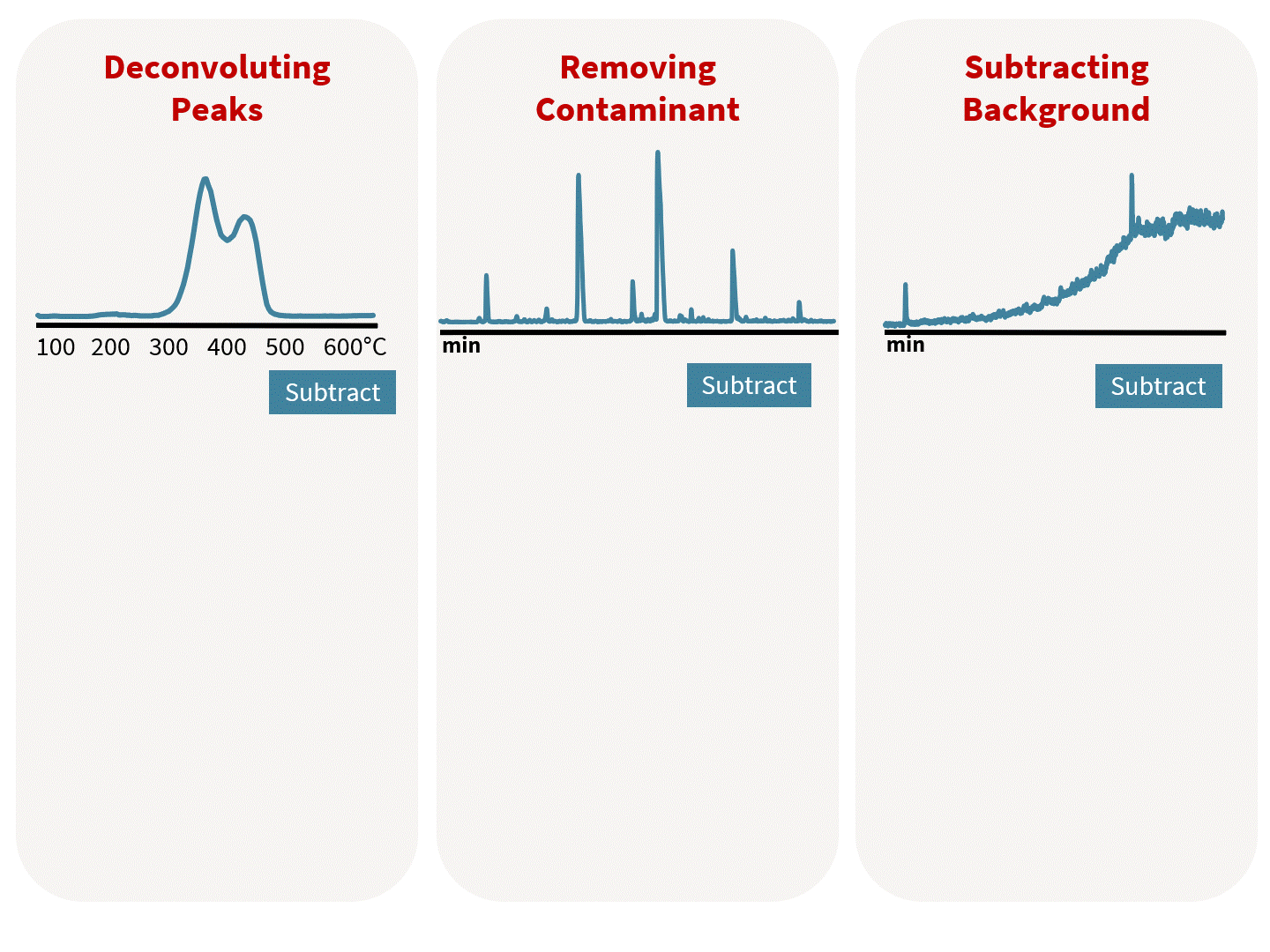
💡 Tip: You can subtract baselines or specific peaks—and repeat the process as needed.
With F-Search, you can characterize unknown samples by searching entire pyrograms or individual peaks. This dual approach lets you confirm compound identity and trace it back to a polymer or additive.

💡 Tip: Toggle between mass spectra and chromatograms to cross-validate your match.
Sometimes, you’re not just waiting for the database to tell you what’s there—you’re searching for something specific.
For example, if you suspect a certain additive, you can search by known fragment ions or retention behavior.
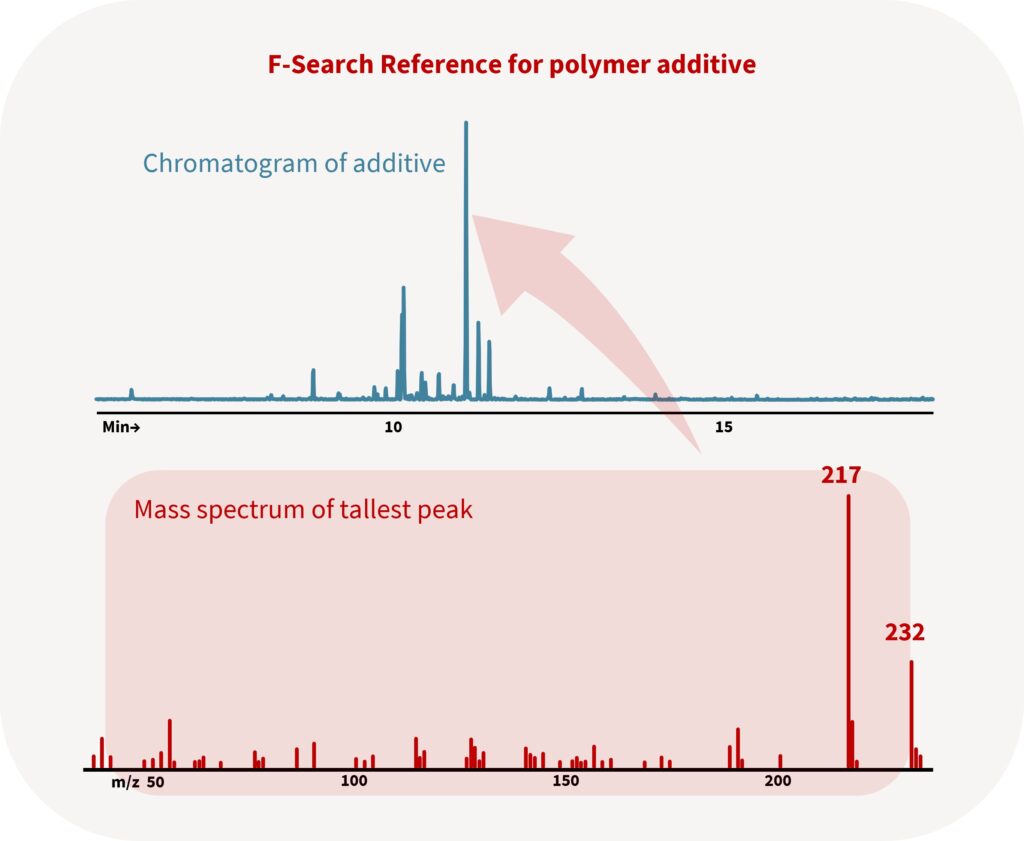
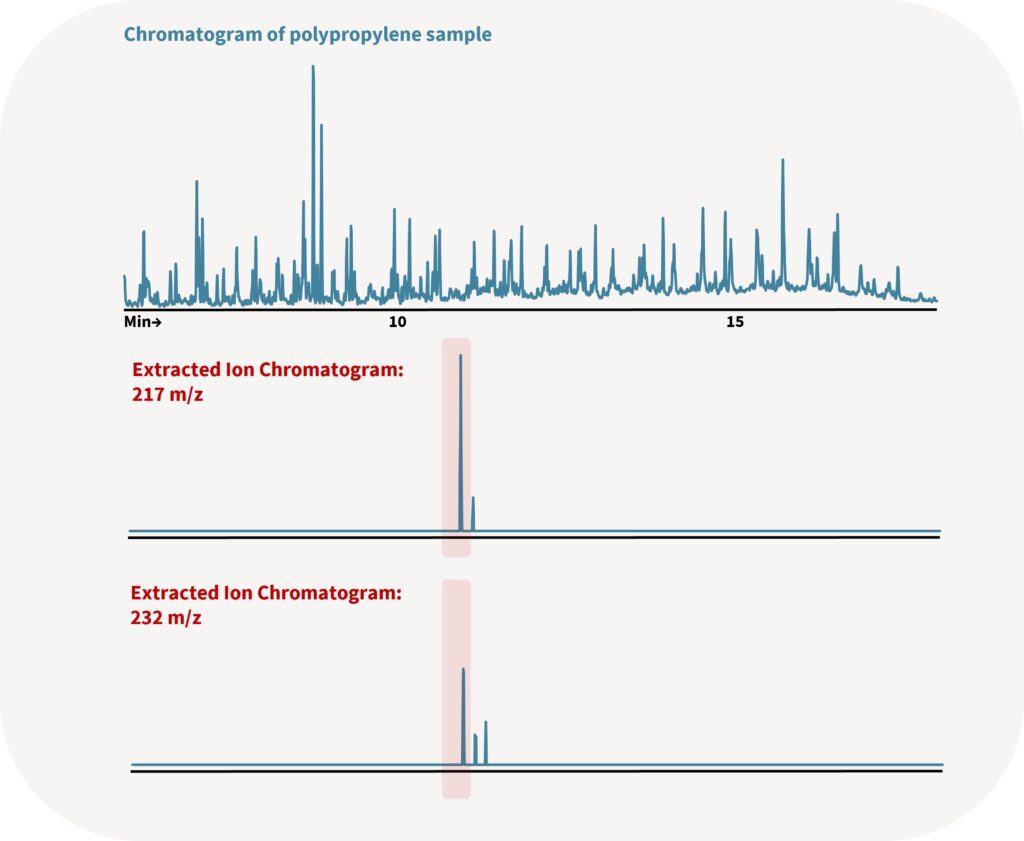
💡 Tip: F-Search libraries include pyrograms, thermograms, and method details to guide your analysis.
F-Search is specialized software for identifying polymers and additives in pyrolysis GC-MS. Its robust search algorithms and four built-in libraries improve match reliability—even when analysis conditions vary.
By combining spectral search, chromatogram matching, and pyrolysis-specific libraries, F-Search empowers analysts to:
Flexible financing, technical services, and refurbished instruments.
Everything you need to advance your lab’s success – all in one place.
8301 New Trails Drive, Suite 100, The Woodlands, Texas 77381
Complete this form below to sign up and we will reach out to you with instructions
